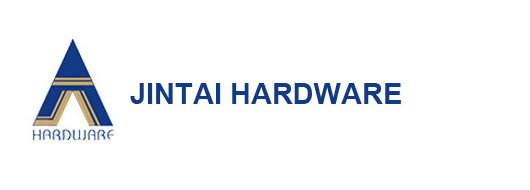Bearings, as an essential part of mechanical products, play an important role in supporting the rotating shaft. According to the different friction properties in the bearing, the bearing is divided into rolling friction bearing (referred to as rolling bearing) and sliding friction bearing (referred to as sliding bearing). The two types of bearings have their own characteristics in structure, and each has advantages and disadvantages in performance. When selecting, it must be considered in combination with actual conditions.
Below, the editor will introduce in detail the main differences between rolling bearings and sliding bearings:
1. Comparison of structure and exercise mode
The most obvious difference between rolling bearings and sliding bearings is whether there are rolling elements.
Rolling bearings: There are rolling elements (balls, cylindrical rollers, tapered rollers, needle rollers), which rely on their rotation to support the rotating shaft, so the contact part is a point. The more rolling elements, the more contact points.
Sliding bearing: There is no rolling element, and the rotating shaft is supported by a smooth surface, so the contact part is a surface.
The difference between the two structures determines that the motion mode of the rolling bearing is rolling, and the motion mode of the sliding bearing is sliding, so the friction situation is completely different.
2. Comparison of carrying capacity
Generally speaking, due to the large pressure bearing area of sliding bearings, their bearing capacity is generally higher than that of rolling bearings, and the ability of rolling bearings to withstand impact loads is not high. However, completely liquid lubricated bearings can withstand more due to the lubricating oil film acting as buffer and vibration absorption. Large impact load. When the speed is high, the centrifugal force of the rolling elements in the rolling bearing increases, and its carrying capacity should be reduced (noise is likely to occur at high speeds). For dynamic pressure sliding bearings, the carrying capacity increases with the increase in speed.
3. Comparison of friction coefficient and starting friction resistance
Under normal working conditions, the friction coefficient of rolling bearings is lower than that of sliding bearings, and the value is relatively stable. The lubrication of sliding bearings is easily affected by external factors such as speed and vibration, and the friction coefficient varies widely.
When starting, because the sliding bearing has not formed a stable oil film, the resistance is greater than that of the rolling bearing, but the starting friction resistance and the working friction coefficient of the hydrostatic sliding bearing are very small.
4. Comparison of applicable working speed
Due to the limitation of the centrifugal force of the rolling elements and the temperature rise of the bearing, the rolling bearing can not rotate too high, and it is generally suitable for medium and low speed working conditions. Due to the heating and wear of the bearing, the working speed of the incomplete liquid lubrication bearing cannot be too high. The high-speed performance of the fully liquid-lubricated bearing is very good, especially when the static pressure sliding bearing uses air as the lubricant, its speed can reach 100000r/min.
5. Power loss comparison
Due to the low friction coefficient of rolling bearings, their power loss is generally not large, which is smaller than that of incompletely liquid lubricated bearings, but it will increase sharply when lubricated and installed improperly. Completely liquid lubricated bearings have low frictional power loss, but for static pressure sliding bearings, due to the power loss of the oil pump, the total power loss may be higher than that of dynamic pressure sliding bearings.
6. Comparison of service life
Due to the influence of material pitting and fatigue, rolling bearings are generally designed for 5 to 10 years, or replaced during overhaul. The bearing bushes of incomplete liquid lubrication bearings are severely worn and need to be replaced regularly. The life of a fully liquid lubricated bearing is theoretically unlimited. In fact, due to stress cycles, especially dynamic pressure sliding bearings, the bearing material may suffer fatigue damage.
7. Comparison of rotation accuracy
Due to the small radial clearance of rolling bearings, the rotation accuracy is generally high. The incomplete liquid lubrication bearing is in the state of boundary lubrication or mixed lubrication, the operation is unstable, and the wear is serious and the accuracy is low. Due to the existence of oil film, the fully liquid lubricated bearing buffers and absorbs vibration with high precision. Hydrostatic sliding bearings have higher rotation accuracy.
8. Comparison in other aspects
Rolling bearings use oil, grease or solid lubricants. The amount is small, and the amount is large at high speeds. The cleanliness of the oil is required. Therefore, sealing is required, but the bearing is easy to replace and generally does not need to repair the journal. For sliding bearings, in addition to incomplete liquid lubrication bearings, the lubricant is generally liquid or gas, with a large amount, and the oil cleanliness requirements are high. The bearing bushes need to be replaced frequently, and sometimes the journal is repaired.
CATEGORIES
Latest news
- Ferrofluid Vacuum Feedthrough Seals us
- SF-1 Carbon Steel Self-lubricating Bea
- Ball transfer unit
- Motorcycle suspension bushing
- Bimetal Flange Bush Bearing
- Selection standard for dimension refer
Contact us
- ADD: No.503,Hunan International Commerce Center, Jintai Square,Changsha 410001,Hunan
- TEL: 86-731-84770165
- FAX: 86-731-84770163
- E-mail: sales2@slide-bearing.com

